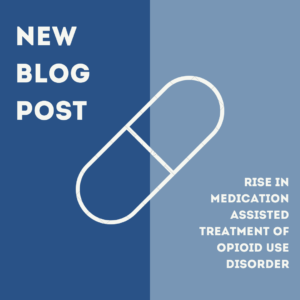A movement towards appropriate and effective medication assisted treatment (MAT) is growing in the fight against opioid use disorder in Ohio. Wholistic substance use disorder recovery has many components; mental health treatment, outpatient treatment, inpatient treatment, primary/chronic condition care services, behavioral therapy, and/or other wrap-around services. Rounding out this list of services is MAT. MAT is an evidence-based treatment for opioid use disorder. Numerous studies have found qualifying medications to significantly reduce the risk of overdose amongst users, while easing the symptoms typically associated with withdrawal.
The Food and Drug Administration (FDA) approved the use of buprenorphine, methadone, and naltrexone products to treat opioid dependence. These drugs are better known by brand names such as Suboxone and Vivitrol. Treatment and recovery-housing programs offering MAT understand there is no “one-size-fits-all” when it comes to medication, coupling these prescriptions with counseling and psychological support. Critics of MAT are skeptical of using more opioids to treat opioid use disorder. However, medical experts say buprenorphine stabilizes people, and as long as taken correctly, allows them to function normally without the same sense of euphoria opioid abuse provokes.
In a first-of-its-kind program in Franklin County, newly released jail inmates are taken by a peer-support agent to receive a shot of Vivitrol to reduce cravings. This monthly, extended-release injection blocks brain receptors from feeling an opioid’s effect in hopes of reducing the likelihood of relapse upon release from jail. Candidates for this program are selected by probation officers and may participate on a voluntary basis. The participants will also be provided help in finding housing and a meeting with Job and Family Services staff. This effort to utilize the criminal justice system as a vehicle for the treatment of underlying substance use disorders came at the recommendation of Franklin County Municipal Court Judges, Columbus City Attorney Zach Klein, and Franklin County Sheriff Dallas Baldwin. The City Attorney’s office has secured nearly $100,000 in federal grants to expand MAT programs inside jails.
However, for members of vulnerable populations, MAT programs are difficult to access. A recent study published in the Journal of Psychiatric Practice revealed flaws in the federal Substance Abuse and Mental Health Services Administration’s database of buprenorphine providers nationwide. The research uncovered long wait times, incorrect phone listings, and certain practices not authorized to prescribe buprenorphine. Making MAT more accessible will require a coordinated effort that extends from treatment and recovery programs to the prison system.
While MAT provides hopeful evidence of successfully assisting those with substance use disorder to regain a normal state of mind, when it comes to wholistic recovery, it is only one piece of the puzzle. Services like counseling, employment assistance, and recovery housing are still crucial components of long-term recovery.


It’s good that you point out that medication-assisted treatment for drug addicts help reduce their risk of relapse and death. My brother is addicted to heroin, and I’m considering finding medication-assisted treatment for him for that reason. I’m going to look for a good provider of medication-assisted drug addiction treatment in my area.